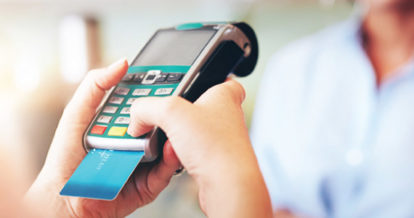Since the EMV liability shift in 2015, banks and payment processing companies are now able to hold your restaurant liable for fraudulent credit card charges if you don’t properly secure your venue to support EMV cards. While EMV compliance is not required by law, your restaurant may now be on the hook if certain types of in-person fraud take place at your business.In other words, if your restaurant still isn’t EMV compliant, you’re putting yourself and your business at risk. In other words, if your restaurant still isn’t EMV compliant, you’re putting yourself and your business at risk.
Confused about what this all means?
Here’s what you need to know about EMV chip compliance for restaurants.
Disclaimer: All of the information contained in this article is for informational purposes only and does not constitute legal, accounting, tax, or other professional or compliance advice. It is your responsibility to determine whether credit card surcharging is permissible in your jurisdiction. You are solely responsible for ensuring that your activity is compliant with the card network requirements and all laws applicable to you. Non-compliance may result in regulatory consequences or fines.
What is EMV Compliance?
Named after its original developers (Europay, Mastercard, and Visa), EMV technology enables debit cards and credit cards with embedded microprocessor chips that store and protect the cardholder’s data. The goal is to replace “magstripe” cards that are more vulnerable to fraud.
Also known as “chip and PIN” or “smart cards,” EMV-compliant payment cards are processed through an updated POS system and payment processor – but your restaurant can still accommodate magstripe cards after upgrading.

Why the Change?
Believe it or not, the U.S. is the world’s last major market to become EMV compliant. The goal of EMV compliance standards is to encourage banks and businesses to implement new payment processing technology that more effectively protects consumers from credit card and debit fraud.
What is credit card fraud in the context of restaurants? This refers to situations in which a customer’s credit card information is stolen and intentionally used for fraudulent purposes.
Countries that have adopted EMV technology have reported a significant drop in credit card fraud compared to using magnetic strips. According to Kiosk Marketplace:
- In the European Union, credit card fraud dropped by 80%
- In Canada, earnings Before Interest & Tax (EBIT) losses dropped by 73%
- In France, counterfeit card fraud dropped by 91%
As EMV compliance has steadily increased across the U.S., a 2019 study by VISA found that the adoption of EMV chip cards by U.S. merchants helped to reduce counterfeit fraud by 87%.
All good reasons to make sure your restaurant is EMV compliant!
EMV Compliance for Restaurants
Before the October 1, 2015 cut off, if a customer came into your venue and racked up a hefty bill using a fraudulent card, the bank would have absorbed the cost. Now, if you’re not EMV compliant with a chip card reader, you’ll be liable for the losses from fraudulent charges and will be required to pay out of pocket – charges that will cost you a lot more than those monthly credit card fees you pay.
But some restaurateurs have since chosen not to become EMV compliant.
Why?
The chargebacks and fines from credit card companies were in some cases less than the cost to meet the liability shift’s requirements. Also, according to Hospitality Technology, “in clear violation of PCIDSS standards, some retailers and restaurateurs are storing the very Track 2 card data that PCI and EMV was supposed to protect. They are doing this in order to maintain an audit trail in an effort to contest the increasingly fraudulent chargeback activity.”
So it’s clear some restaurants have been fighting against the EMV liability shift in ways that aren’t the most ethical. But guess what? If you own a restaurant with one or only a few locations, the cost of EMV compliance is worth making sure you’re treating customer data with care.
The “chip it” shift is happening on the consumer side whether restaurants like it or not, meaning that diners are coming to expect the experience of paying for meals with their debit and credit chip cards.

How to Become EMV Compliant
The process of “how to chip” requires an update to your POS system and your restaurant merchant services provider. Here’s how you can become EMV compliant:
1. Update Your Payment Processor
Check in with your credit card acquirer, processor, and bank about what you need to upgrade and how much it will cost. You’ll need an EMV-compliant chip card reader to begin accepting “chip and PIN” or “chip and signature” payments.
2. Update Your POS System
To make sure you’re EMV compliant, start with your restaurant POS system. Depending on your POS system, you may need to purchase an upgrade, call a technician to update the system for you, or it may be as simple as updating some software.
Pro tip: If you’re a TouchBistro customer, TouchBistro Payments will put you one step ahead. Our integrated POS and payment processing solution lets restaurants take integrated payments with TouchBistro as soon as your equipment arrives, which makes it easier to get started with an EMV compliant system.
3. Train Your Staff
After you upgrade, you’ll want to train your staff on how to properly use the new EMV-compliant terminals. They should be able to show your customer how to insert their chip cards into the machine and then either sign or enter their PIN to complete the transaction.
Don’t forget: Update your restaurant training manual to include information for staff about using EMV terminals.
Learn how to save money on payment processing fees
Sign up for our free weekly TouchBistro Newsletter







